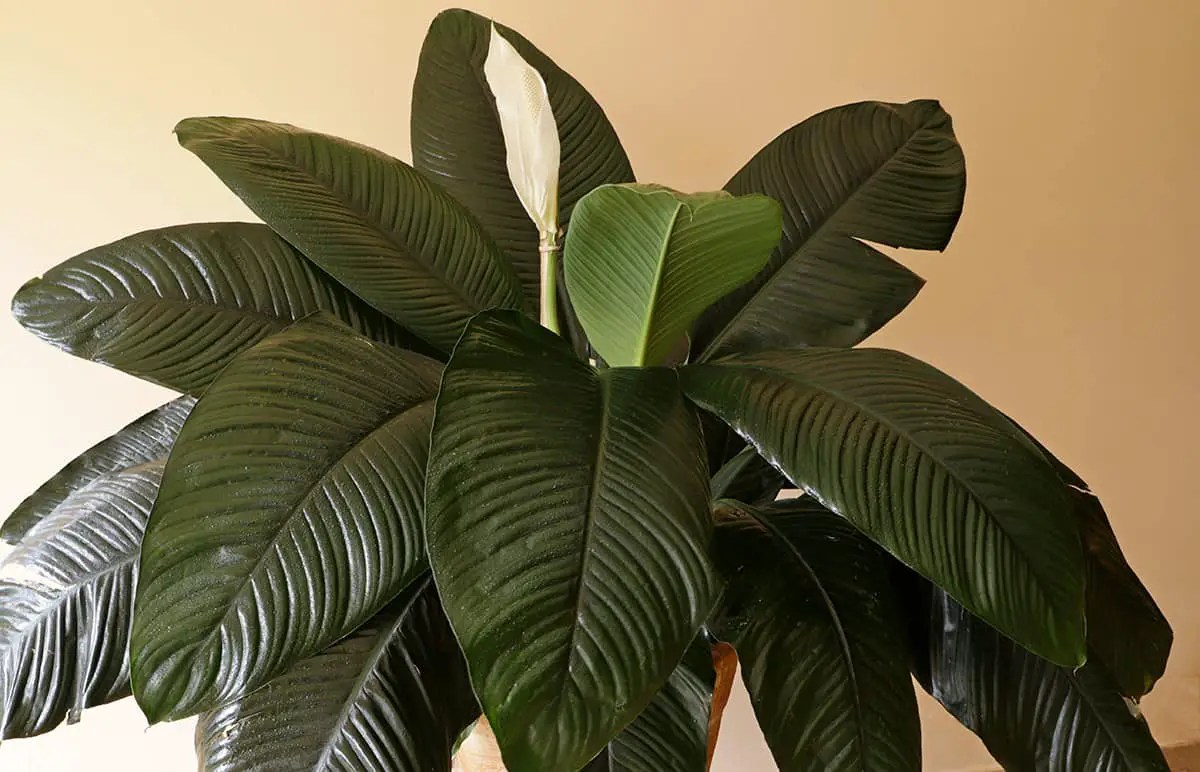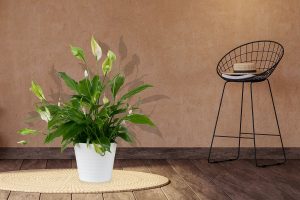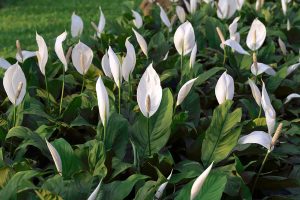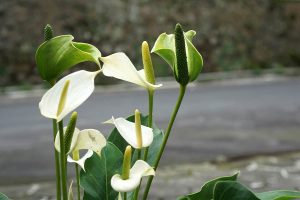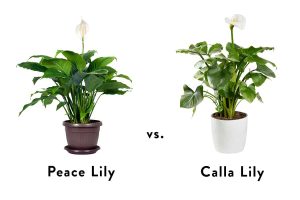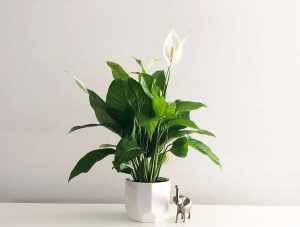Peace Lilies can grow to impressive heights in their native habitats of South American rainforests. They are low-growing plants that benefit from the dappled shade of overhead trees and the high humidity levels.
When grown as houseplants, like most other plants, the mature height of Peace Lilies is somewhat restricted. This is in part due to the fact that indoor conditions cannot accurately replicate the natural conditions of the tropical rainforest, but mainly it is because the roots do not have enough space to spread in a plant pot.
However, there are some varieties of Peace Lily that can grow to be very large, even when kept as houseplants. Here we look at the best giant Peace Lily varieties and how to care for them.
Table of Contents
Large Varieties of Peace Lily
Sensation Peace Lily
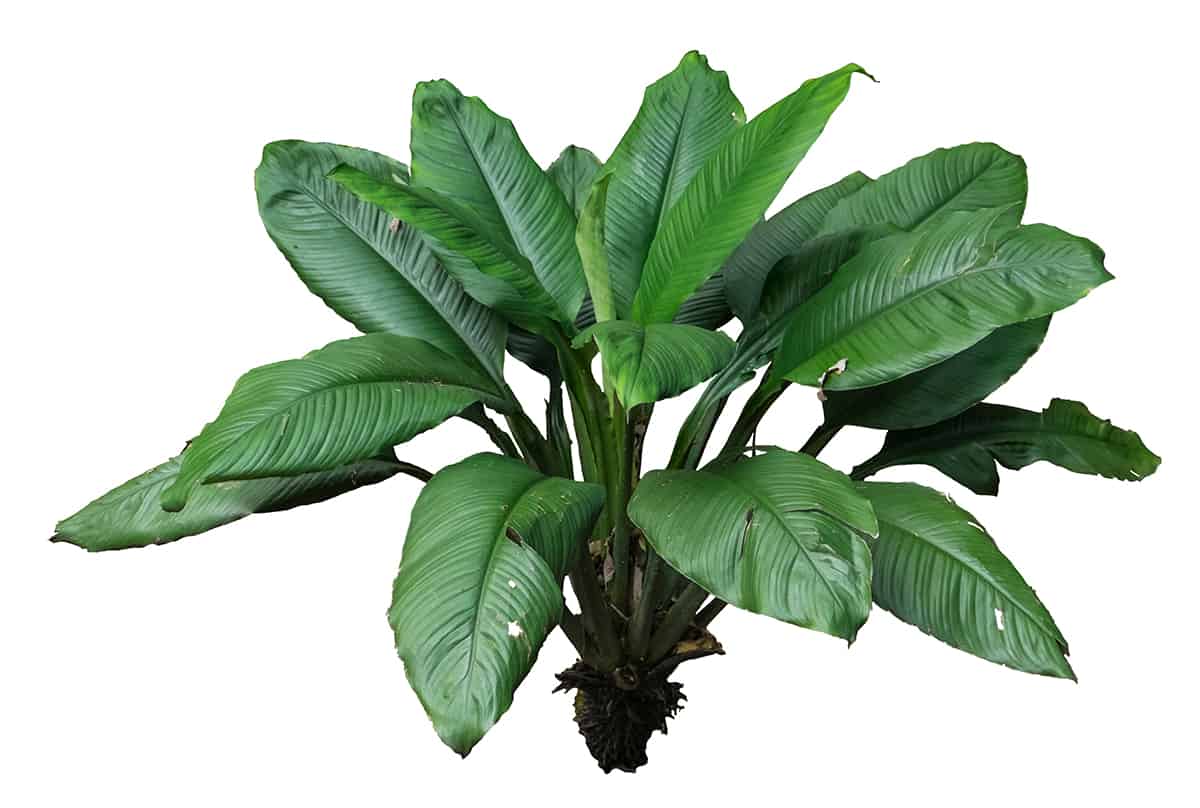
This Peace Lily is botanically called Spathiphyllum ‘Sensation’, but is more commonly referred to as Sensation Peace Lily. It is also widely known as the ‘Giant Peace Lily’, because it can reach impressive heights of up to 6 feet. The foliage of this plant looks proportional to the total height and width and is produced in a dark shade of green with a glossy finish.
The leaves are heavily veined, which creates a deep, ribbed look, giving the plant an interesting appearance even when it is not in bloom. The Sensation Peace Lily is the largest of all the Peace Lilies, with a spread of up to 6 feet to match the height. It works well as an architectural plant in an interior space and will need to be kept in a pot on the floor due to its great height.
Like other Peace Lilies, the Sensation Peace Lily produces flowers with elegant white spathes surrounding them in spring, and they are also able to bloom during winter with the right conditions.
Mauna Loa Supreme Peace Lily
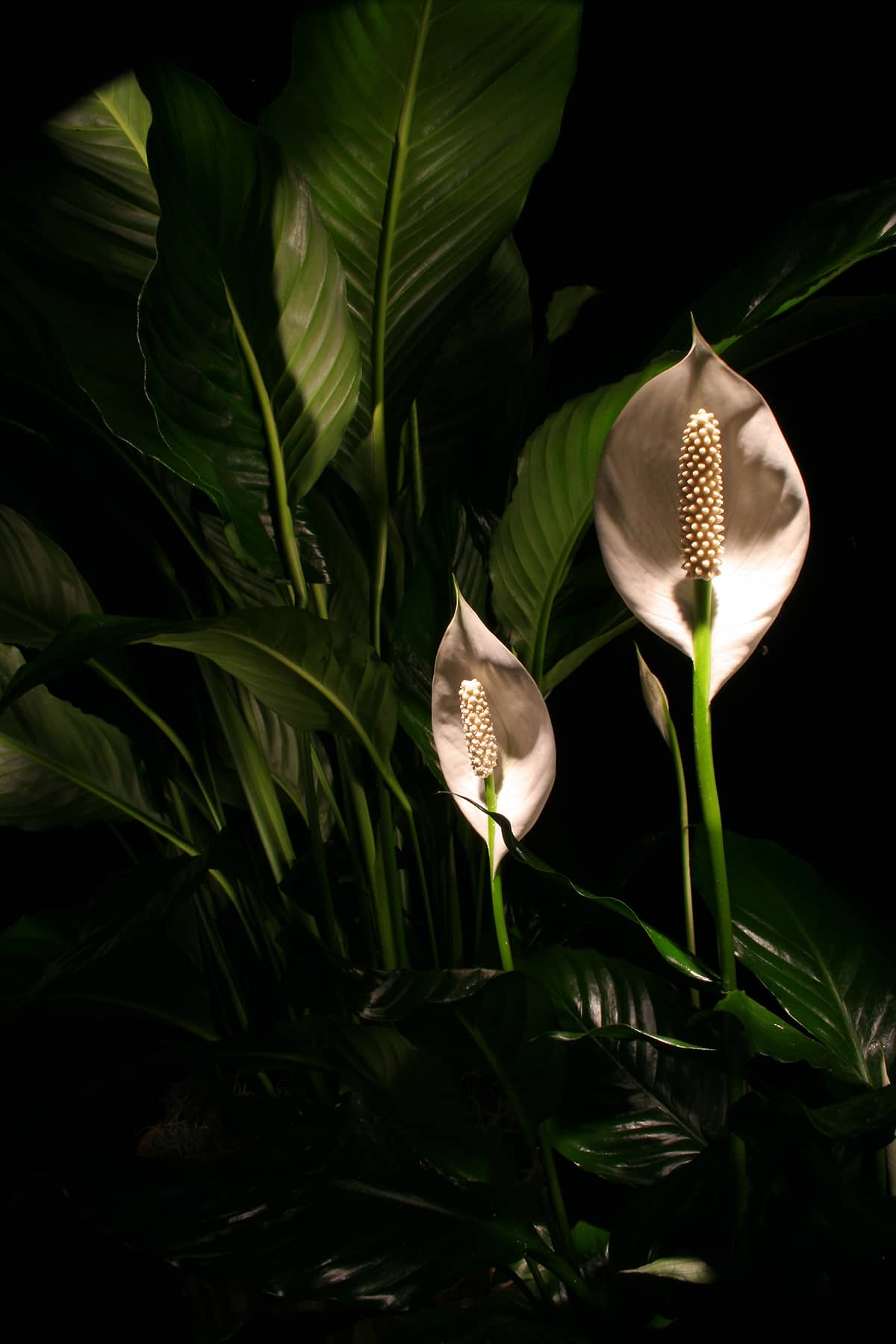
The Mauna Loa Supreme Peace Lily is not the largest in terms of height or width, but it does produce very large leaves. Each leaf on this variety of plants will typically measure 9 inches in length and 5 inches in width. As you might imagine, this means that the leaf shape is not long and slender like most other types of Peace Lily. Instead, it is broad and elliptical. The leaves on this plant could be easily mistaken for Hosta leaves due to their shape, size, and coloring.
When it comes to height, the Mauna Loa Supreme Peace Lily is considered to be medium-sized. It will usually reach a maximum height of around 3 feet, depending on the growing conditions. The flowers that this plant produces are oversized to compete with the leaves. Each bloom can measure as much as 4 inches in width and will stand at the end of a stem measuring between 15 and 20 inches long.
Blue Moon Peace Lily
This is a huge variety of Peace Lily, which has elliptical-shaped leaves with slightly ruffled edges. The foliage is a deep, dark green color, which provides a striking contrast against the large white blooms. The typical height of this plant is around 5 feet, and the leaves are oversized to match. In its natural habitat on the rainforest floor, the plant has a clumping habit, and the leaves point upwards and then fan out at the top.
This is a striking plant that adds a real tropical feel to a space. It is a prolific bloomer, which further adds to its appeal. While most Peace Lilies will tolerate low levels of light, this is a variety of Peace Lily that actually thrives when positioned in low light with high humidity levels. It’s a great plant to add life to a dark corner in the home; just make sure you remember to mist the leaves regularly or use a humidifying pebble tray. Alternatively, it would be very happy in a low-lit bathroom.
Picasso Peace Lily
This is an easily recognizable Peace Lily because of the irregular variegation on its foliage. It is named after the famous painter because the cream and green markings resemble a random paint splattering. This is among the rarest types of Peace Lilies, so it isn’t widely available, but you should be able to find it in specialist nurseries.
When the Picasso Peace Lily is growing in its natural environment, it will generally grow to heights of around 6 feet; however, when kept as a houseplant, it will only reach around a third of its expected size, settling at a maximum of about 2 feet in height.
Giant Peace Lily Care FAQs
Do giant Peace Lilies need different care than small Peace Lilies?
Most varieties of giant Peace Lily can be cared for in the same way that you would care for a medium or small-sized Peace Lily. All of these plants are native to the rainforests of South America, so they enjoy moist soil, high humidity, and dappled light.
The exception to this is the variegated varieties of giant Peace Lily, which may need more hours of light each day to effectively photosynthesize. Giant Peace Lilies will also be grown in larger pots than their smaller counterparts, so you might find that they need to be watered on a slightly different schedule.
The soil in a small plant pot will dry out more quickly than the soil in a large plant pot, so you may be able to go longer in between waterings with a giant Peace Lily. To avoid overwatering or underwatering, always check the condition of the soil regularly.
How often should I re-pot my giant Peace Lily?
Peace Lilies thrive in a root-bound condition. This is when the roots are compacted inside the pot with little space to spread out. Because of this, you should not be eager to re-pot your Peace Lily very frequently, as it will grow best when it is crowded. At the most, you can expect to re-pot your giant Peace Lily every three years.
Signs that your Peace Lily needs to be re-potted include the leaves wilting while the soil is still moist or the growth of new leaves which look misshapen or unhealthy.
Should I mist a giant Peace Lily?
Yes, misting your giant Peace Lily will help it to thrive. These plants love high levels of humidity, so any actions you can take to increase the humidity inside your home will be appreciated. However, Peace Lilies will also grow well in average humidity levels, so if you prefer low-maintenance plants, then you can simply ignore the fact that these species are humidity-lovers and leave them as they are.
They will grow just fine in normal household humidity levels and even drier environments. If you do want to keep your Peace Lily happy, you can increase humidity levels by misting the leaves with a water spray every few days or using an electric humidifier. You can also group tropical plants together or use a pebble tray to help with higher humidity levels.
To make a pebble tray, set the Peace Lily plant pot on a tray of pebbles, and keep the pebbles wet by pouring water onto them every week. As the water evaporates, the humidity around the plant increases.
